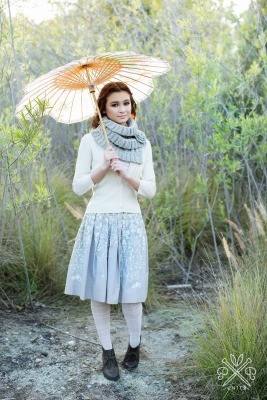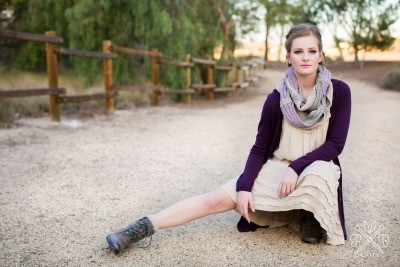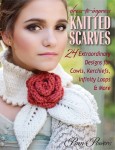I’m thrilled to share a guest post from Pam Powers today, on one of my favorite topics – yarn substitution! This post is part of the blog tour for Pam’s new book, and Stackpole Books is sponsoring a giveaway, so read on for details!
This post contains affiliate links.
About Pam Powers
Pam Powers, the author of Dress-to-Impress Knitted Scarves: 24 Extraordinary Designs for Cowls, Kerchiefs, Infinity Loops & More, is a California-based knitwear designer. In addition to her self-published Art Fiber Design patterns, her work has also been published by Interweave Knits, KnitCrate, Knit Culture, and Twist Collective.
Pam can be found online on her website, Facebook, Instagram, Pinterest, Ravelry (as psquared and on her designer page), and Twitter.
Guest Post: Yarn Substitutions by Pam Powers
I get many inquiries regarding yarn substitutions for my patterns. As knitters, we are always trying to find stash-busting projects, especially accessories such as scarves that only require 1-2 skeins. I am going to share with you how I choose an alternate yarn for an existing pattern. Disclaimer 1: I am not the aficionado on all things yarn, but I do know when something doesn’t quite work for me.
Gauge – This is the first consideration I make. I like the gauge on the ball band to be within one stitch for a 4″ / 10 cm sample of the yarn I am substituting. This gauge should also be accomplished using needles within one needle size of the original yarn also. For example, if a pattern calls for a gauge of 20 sts per 4″ / 10 cm on a US 8 needle, a potential substitute yarn will be anywhere from 19 sts on a US 9 to 21 sts on a US 7.
Yardage / Weight Ratio – I calculate the yards per gram for both yarns by dividing the yards per skein by the grams. If there is more than a 10% difference, I know the drape and feel of the project will be different. Disclaimer 2: I once had someone tell me that this is a ridiculous system, so take it for what it’s worth.

Content – It is important that the substitution yarn has a fiber content that behaves similarly to the original yarn. Different fibers have varying densities and body, regardless of the gauge. For example a hemp yarn will probably not be a good substitution for a wool yarn in a pattern that requires substance or body, like when there are ruffles involved. Most of the scarf patterns in my book have texture and/or dimension to them, so having a yarn that “stands up” is crucial.
There are also other factors such as loft, ply and color (solid versus variegated) that will have an effect on the finished product. I tend to substitute with a yarn that is similar in these areas to the original yarn.

I get a lot of emails from knitters asking if a certain yarn will work as a substitution in one of my patterns. The only way of really knowing, even if this yarn meets all of the criteria above, is to knit a swatch. And let me just say, if you have to talk yourself into believing that the yarn works, it probably doesn’t. However, my intention when knitting a new sample of a pattern is to have the new project emulate the original. Whether something “works” or not is really up to the knitter. In the end, that is the beauty of making a handmade project—creativity rules!
Giveaway
Thanks, Pam, for sharing these tips!

Like me, Pam clearly has a passion for neckwear! Her book, Dress-to-Impress Knitted Scarves: 24 Extraordinary Designs for Cowls, Kerchiefs, Infinity Loops & More, includes 24 gorgeous knit patterns for scarves, ascots, cowls, and kerchiefs. You can see stunning full page pictures of each design them here in the Stackpole Books look book.
By the way, if you’re still intimidated by yarn substitution, several of her book designs, including the Chantilly Lace Ascot and the Cowboy Cowl, are available as Craftsy kits (along with Ruffled and Ruched Scarf and other great designs by Pam).
If you love knitting scarves, you’ll want to enter this giveaway for Dress-to-Impress Knitted Scarves, courtesy of Stackpole books! This giveaway is open to U.S. readers. Enter by Tuesday, January 13 at 11:59 p.m. Eastern, and be sure to add your giveaway entries to the Rafflecopter widget (since that’s how a winner will be chosen at random). Good luck!





I would try the Challah infinity scarf first. Beautiful!
I love all of Pam’s patterns. It will be hard for me to decide which one to do first.
Love the Challah Infinity Scarf, although the Quilted Lattice Ascot comes in as a close second.
I like Ruffled & Ruched Scarf
I would love to make the Monarch Cable Cowl.
Beautiful patterns. I would start with the Chantilly Lace Ascot.
Either the Primrose Ascot ot the Gingham & Wool Cowl would be my first project.
I love the Primrose Ascot! That is definitely the first one I would make, although I’m sure I’d make a few of the others too 🙂
As I am determined to learn to knit this year I’d give whatever looks the easiest to start. Then work my way through the rest as they are so beautiful!
Challah infinity scarf <3
the shirring cowl
I love the Challah Infinity Scarf but I would probably try my hand at the Chantilly Lace Ascot first.
I’m thinking it would be the Gingham & Wool Cowl.
I like the Challah Infinity Scarf .. It is so beautiful!
The one on the cover is beautiful. I’d love to knit that one. 🙂 Thanks for sharing some knitting love on your blog. 🙂